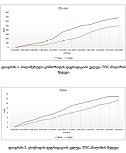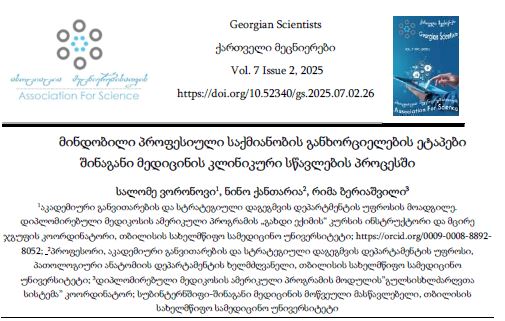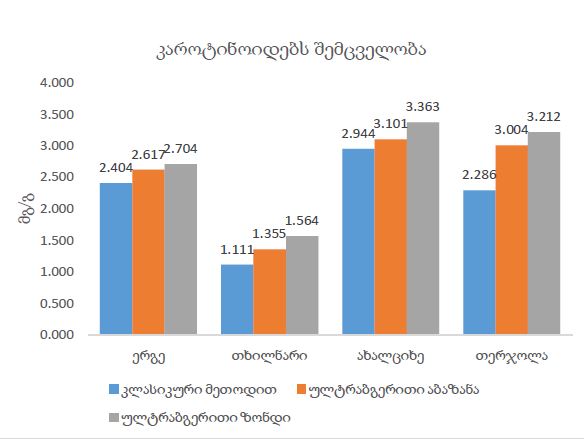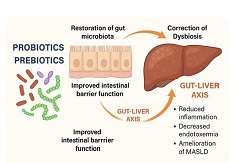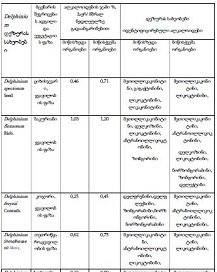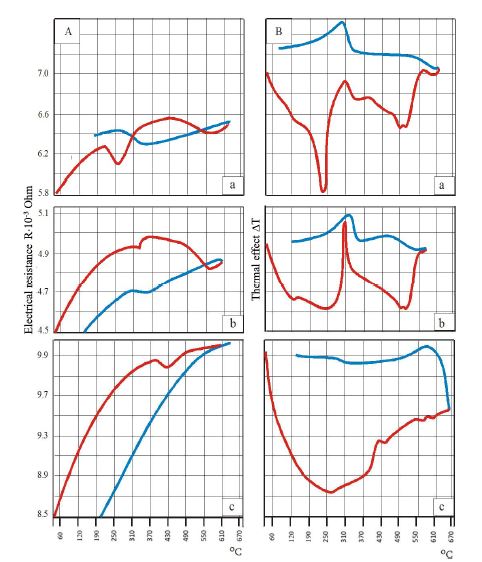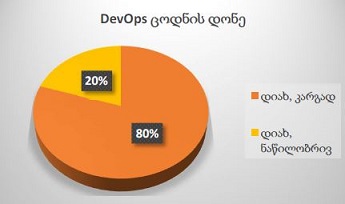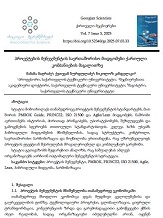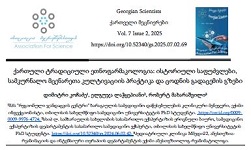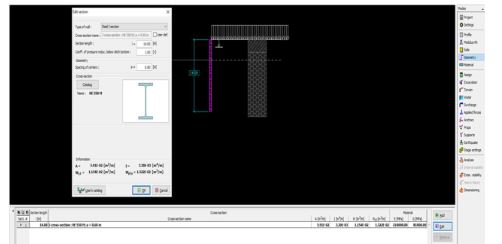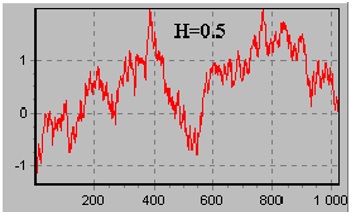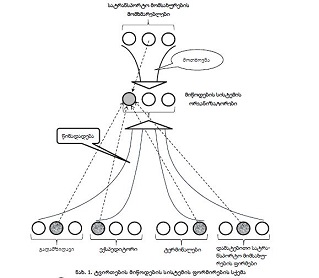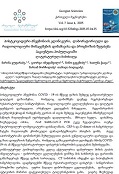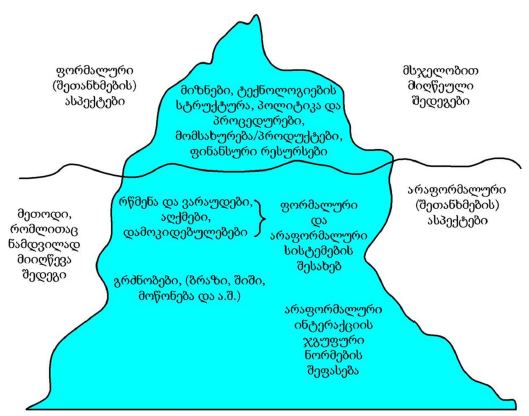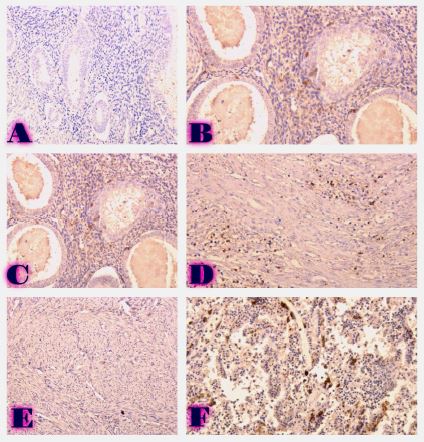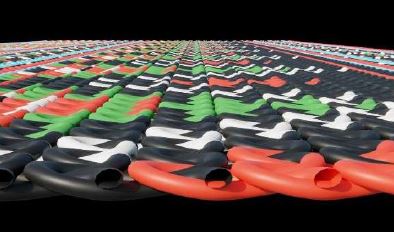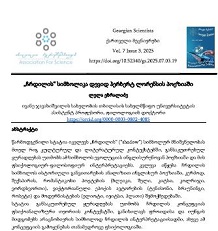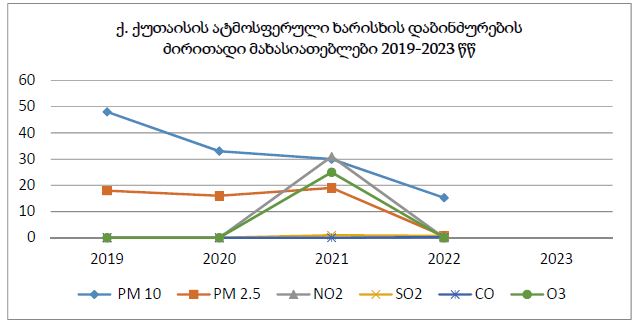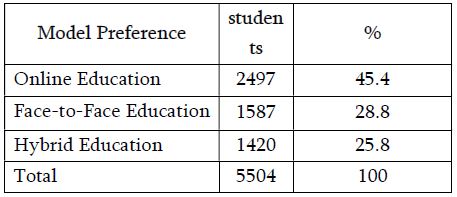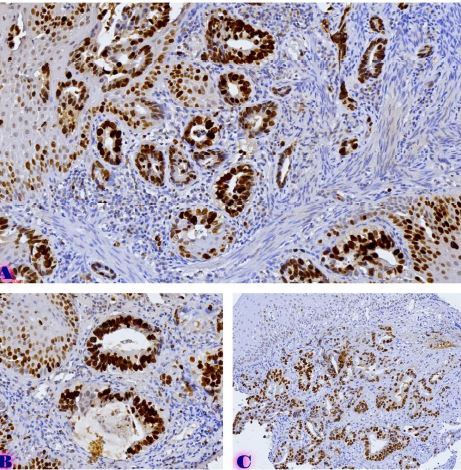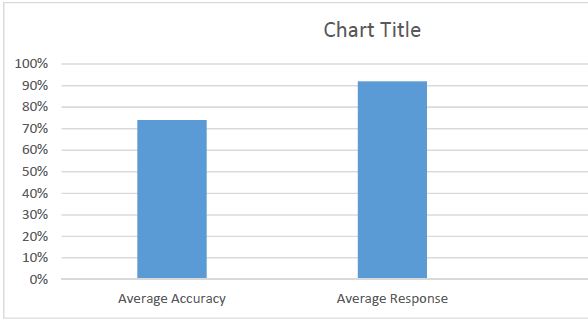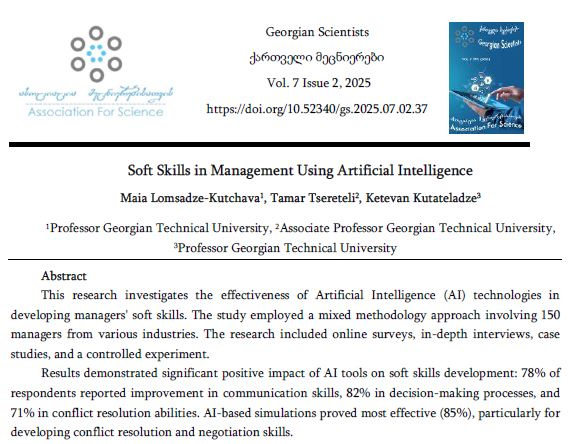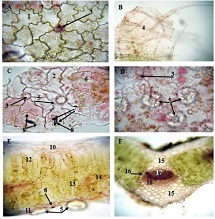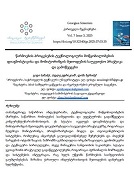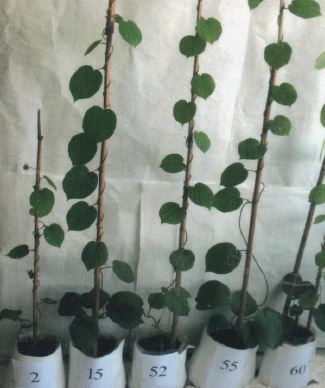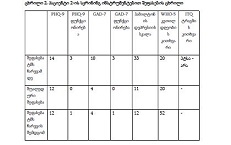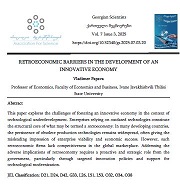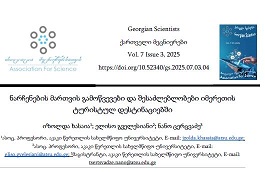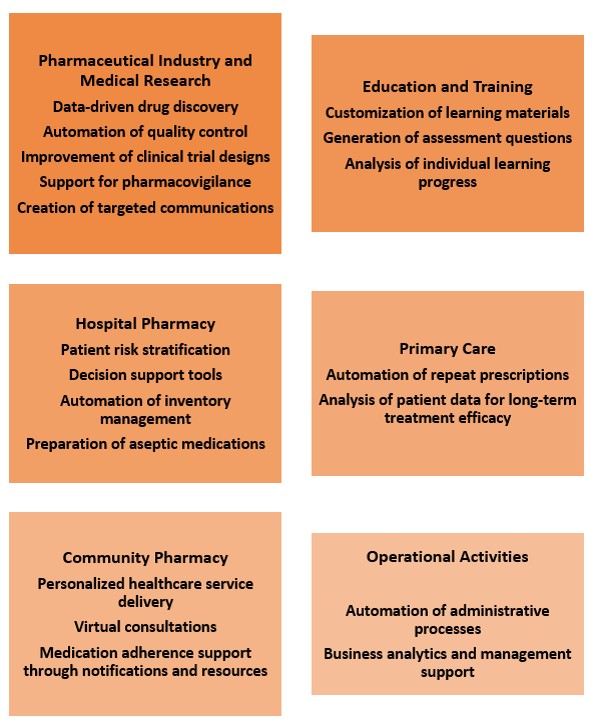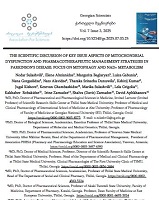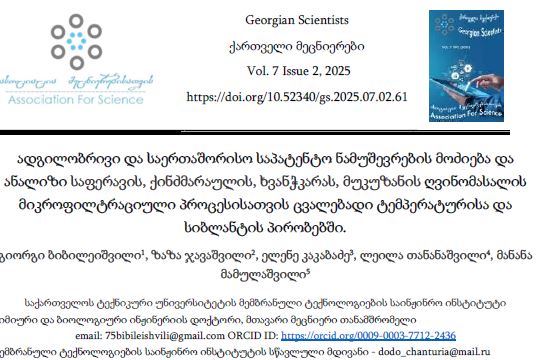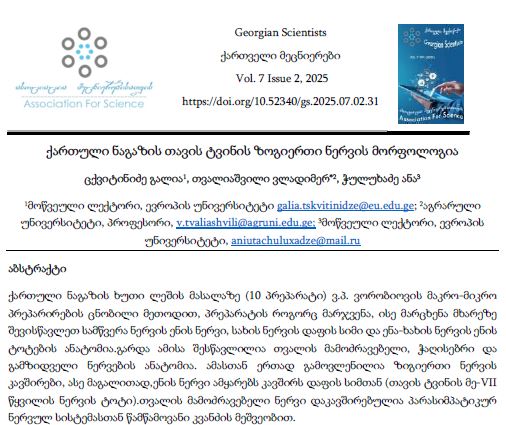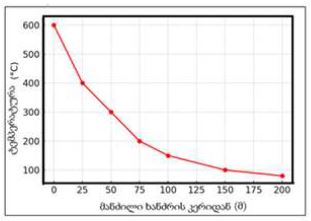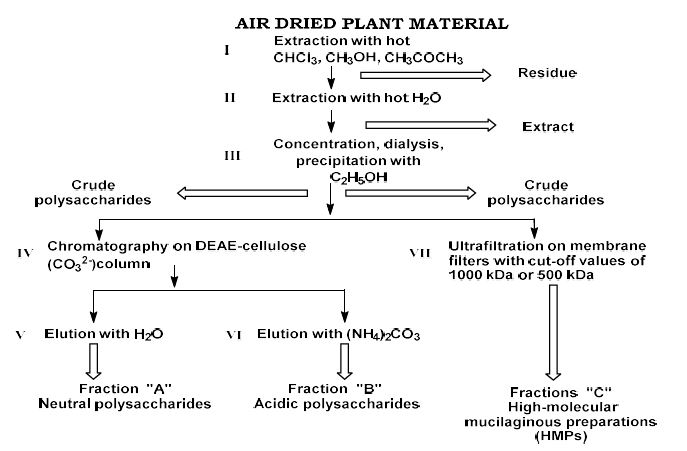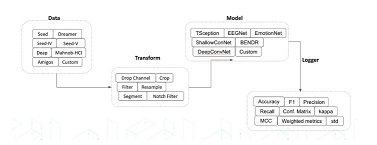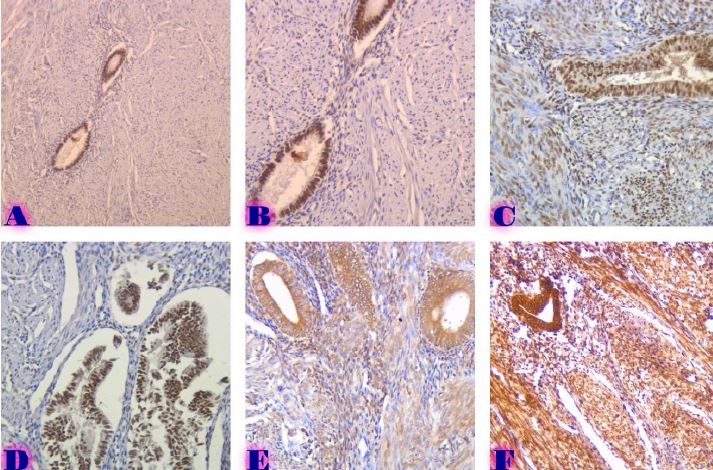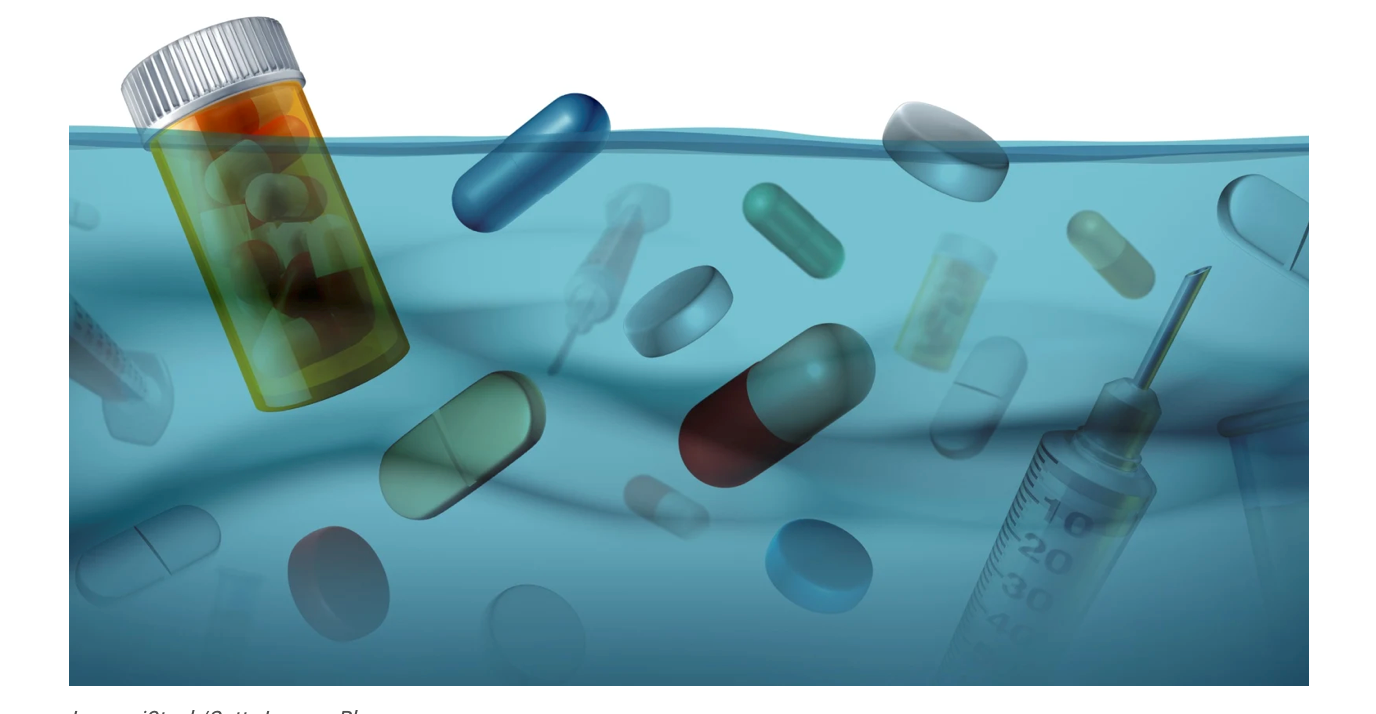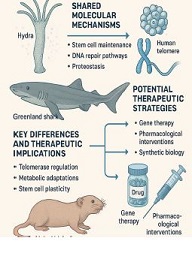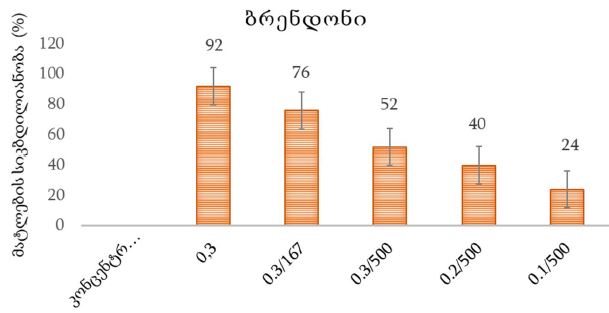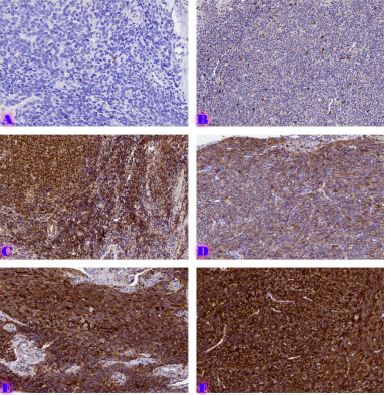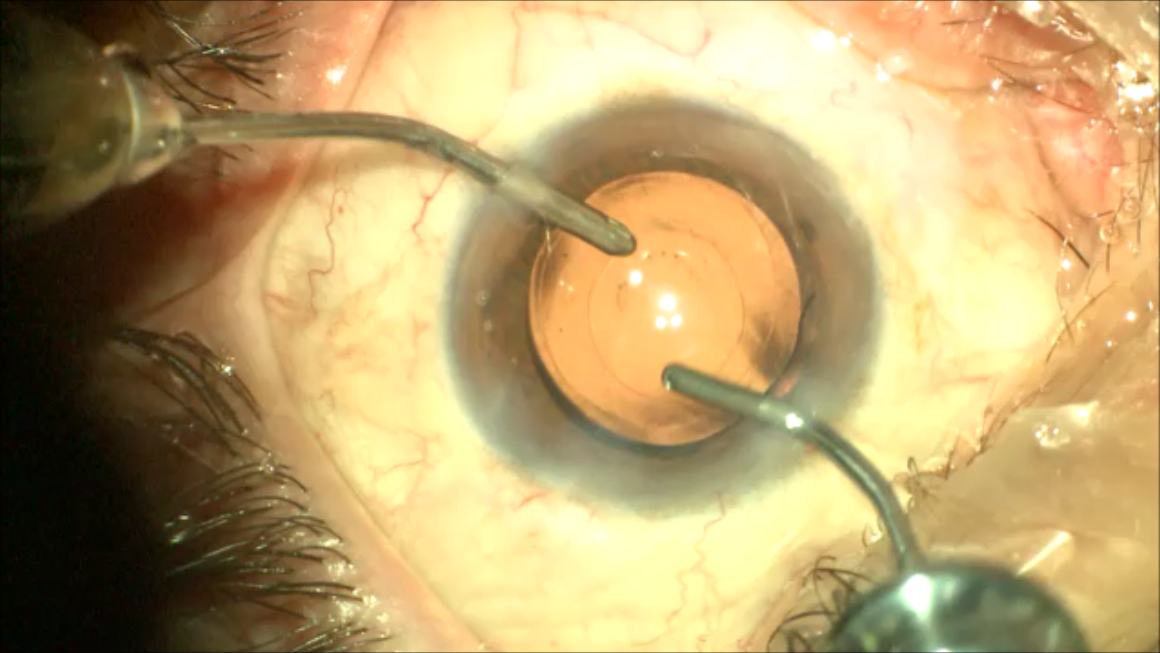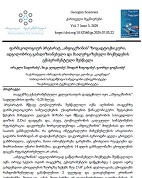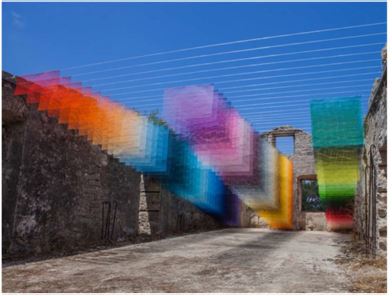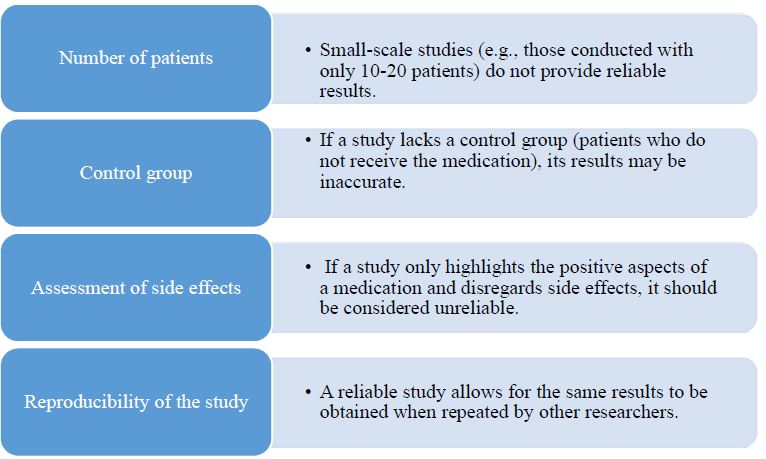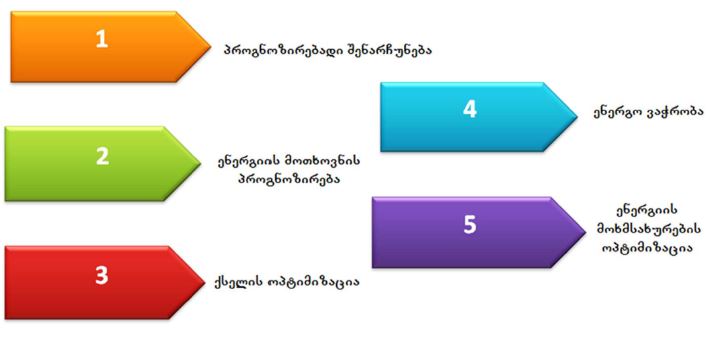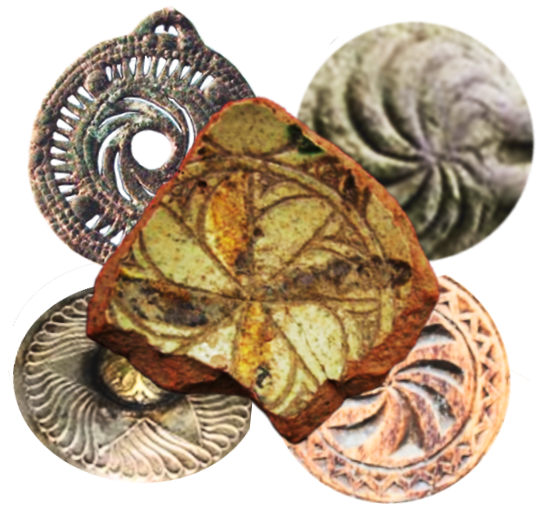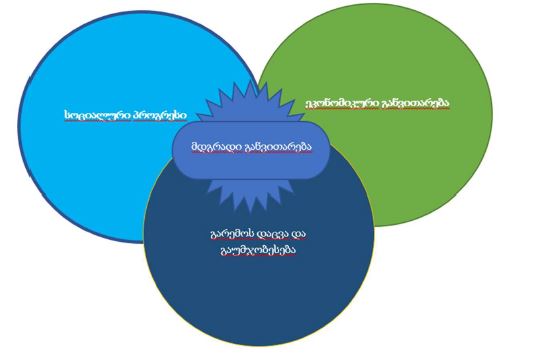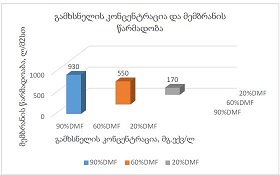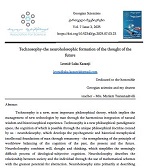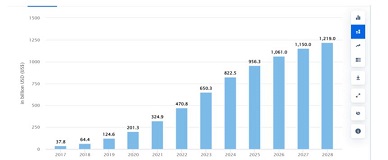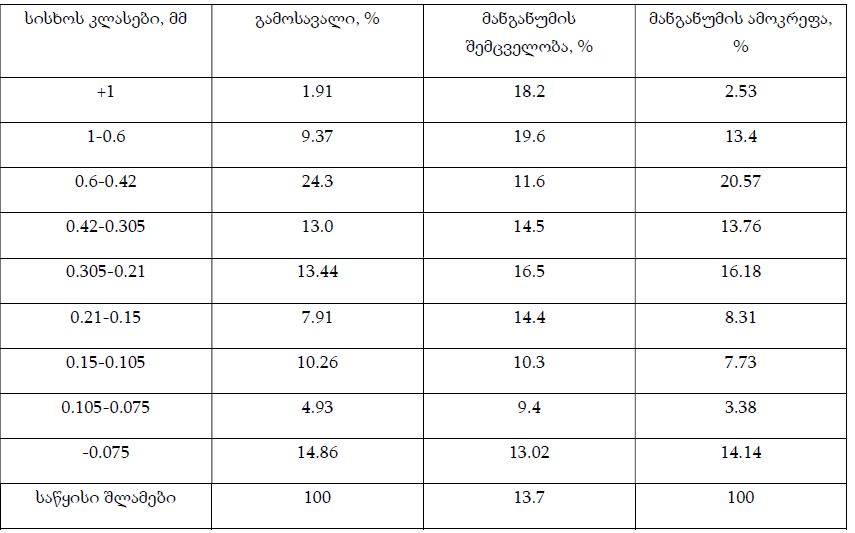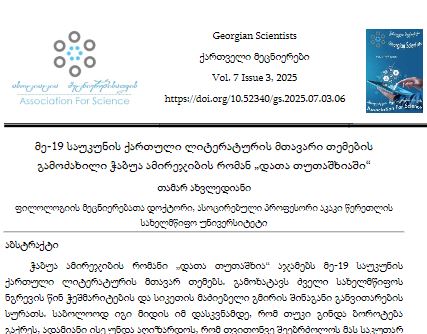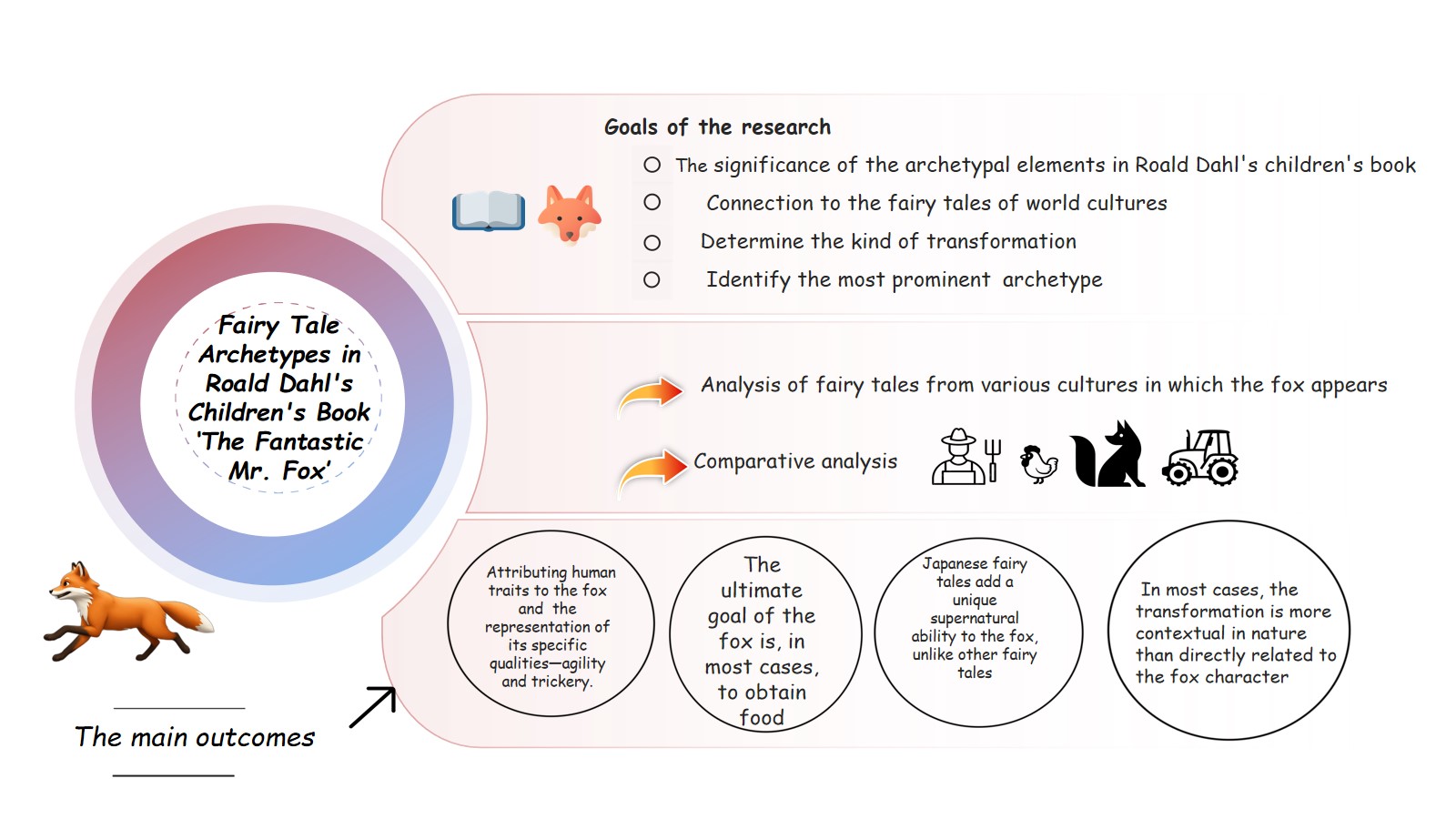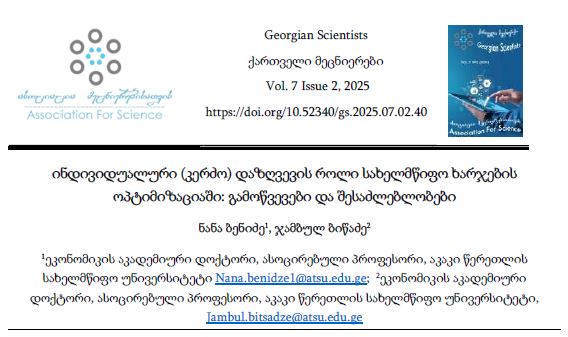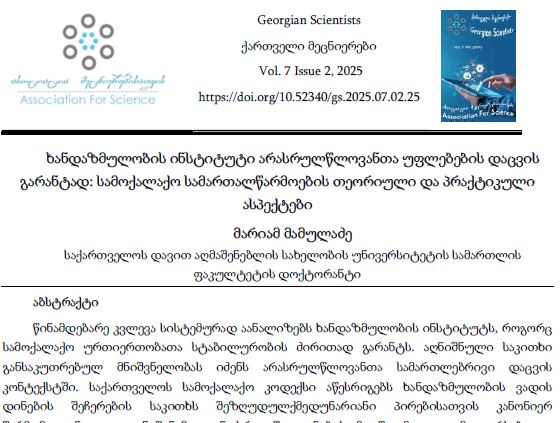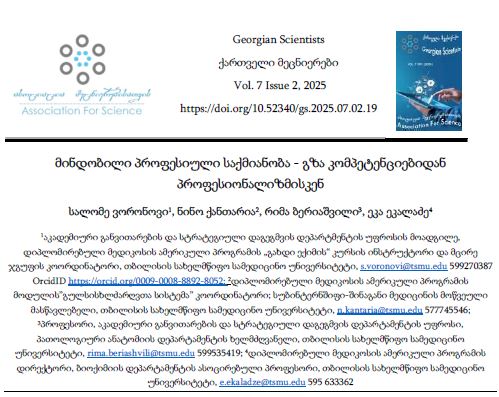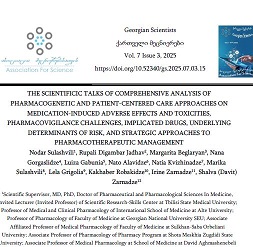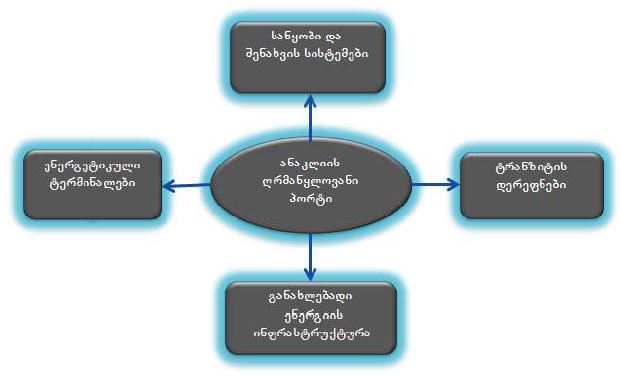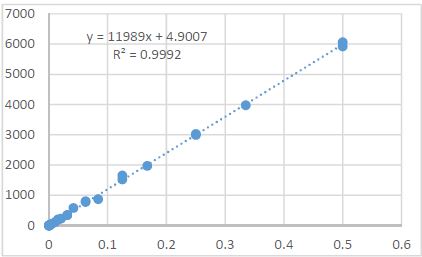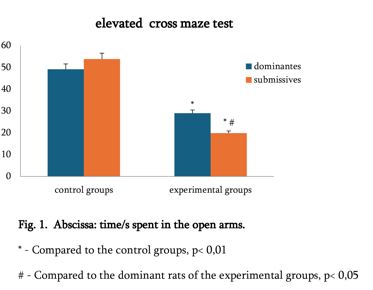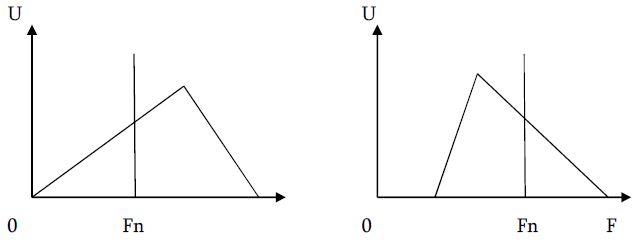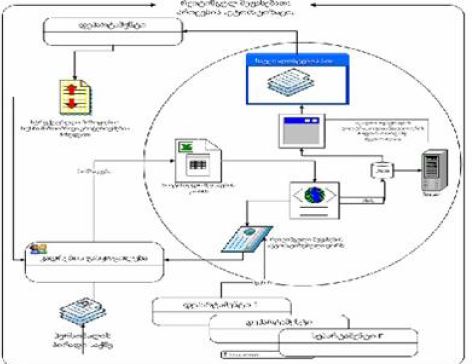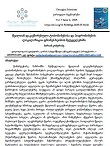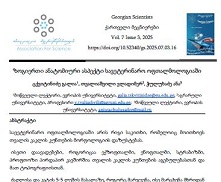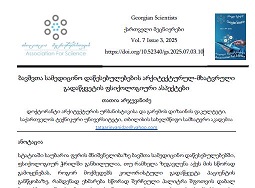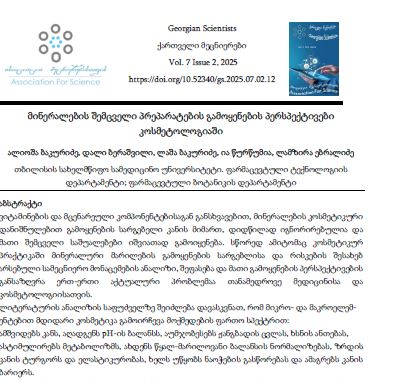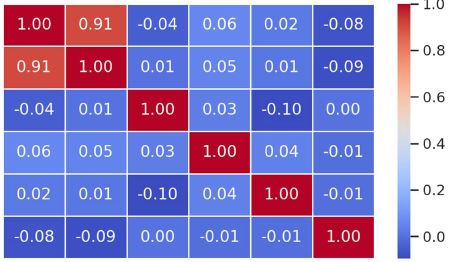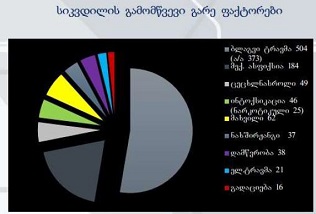Chemical Composition and Biological Activity of Angelica L. Species
Downloads
Angelica L. is one of the most well-known genera of the Apiaceae family. Genus Angelica has a wide range of distribution and comprises around 60 to 90 species. Traditional medicine employs Angelica sp. for various pharmacological activities, such as: anti-inflammatory, analgesic, treatment of dermatological and intestinal diseases. Different phytochemicals have been isolated and identified from Angelica species. The most frequent chemical constituents are coumarins, furanocoumarins, essential oils, phthalides, polysaccharides, benzofuran, and polyacetylene derivatives. Mentioned compounds cause diverse biological activity, such as: anti-inflammatory, antimicrobial, and cytotoxic. Some species exhibit anxiolytic activity too.
Downloads
G. E.-S. Batiha, H. M. Shaheen, E. A. Elhawary, N. M. Mostafa, O. A. Eldahshan, and J.-M. Sabatier, “Phytochemical Constituents, Folk Medicinal Uses, and Biological Activities of Genus Angelica: A Review,” Molecules, vol. 28, no. 1, p. 267, Dec. 2022, doi: 10.3390/molecules28010267.
J.-P. Reduron, “Taxonomy, origin and importance of the Apiaceae family.,” in Carrots and related Apiaceae crops, G. Emmanuel and W. S. Philipp, Eds., 2nd ed.Wallingford: CABI, 2020, pp. 1–8. doi: 10.1079/9781789240955.0001.
S. Menglan et al., “Apiaceae (Umbelliferae),” Flora China, vol. 14, pp. 1–205, Jan. 2005.
საქართველოს ფლორა, 2nd ed., vol. IX. თბილისი: ,,მეცნიერება", 1984.
მაყაშვილიალექსანდრე, ბოტანიკური ლექსიკონი. მცენარეთა სახელწოდებანი, 3rd ed. თბილისი: ,,მეცნიერება", 1991.
S. D. Sarker and L. Nahar, “Progress in the Chemistry of Naturally Occurring Coumarins,” in Progress in the Chemistry of Organic Natural Products 106, A. D. Kinghorn, H. Falk, S. Gibbons, and J. Kobayashi, Eds., in Progress in the Chemistry of Organic Natural Products, vol. 106. Cham: Springer International Publishing, 2017, pp. 241–304. doi: 10.1007/978-3-319-59542-9_3.
T. Feng et al., “Molecular systematics of Angelica and allied genera (Apiaceae) from the Hengduan Mountains of China based on nrDNA ITS sequences: phylogenetic affinities and biogeographic implications,” J. Plant Res., vol. 122, no. 4, pp. 403–414, Jul. 2009, doi: 10.1007/s10265-009-0238-4.
J. Ahn, M.-J. Ahn, Y.-W. Chin, and J. Kim, “Pharmaceutical Studies on ‘Dang-Gui’ in Korean Journals,” Nat. Prod. Sci., vol. 25, no. 4, p. 285, 2019, doi: 10.20307/nps.2019.25.4.285.
Zhonghua Renmin Gongheguo wei sheng bu yao dian wei yuan hui, Pharmacopoeia of the People’s Republic of China, English ed. 2000. Beijing, China: Chemical Industry Press, 2000.
J. Chen, H. Li, D. Wang, C. Yang, and Y. Liu, “Determination of sucrose in radix Angelicae sinensis by HPLC-ELSD,” Mod. Chin. Med., no. 10, pp. 19–20, 2008.
I. L. I. Hook, “Danggui to Angelica sinensis root: Are potential benefits to European women lost in translation? A review,” J. Ethnopharmacol., vol. 152, no. 1, pp. 1–13, Feb. 2014, doi: 10.1016/j.jep.2013.12.018.
Y.-K. Kim, Y. S. Kim, and S. Y. Ryu, “Antiproliferative Effect of Furanocoumarins from the Root ofAngelica dahurica on Cultured Human Tumor Cell Lines,” Phytother. Res., vol. 21, no. 3, pp. 288–290, Mar. 2007, doi: 10.1002/ptr.2043.
K. Sowndhararajan and S. Kim, “Neuroprotective and Cognitive Enhancement Potentials of Angelica gigas Nakai Root: A Review,” Sci. Pharm., vol. 85, no. 2, p. 21, Apr. 2017, doi: 10.3390/scipharm85020021.
K. Sowndhararajan, M. Seo, M. Kim, H. Kim, and S. Kim, “Effect of essential oil and supercritical carbon dioxide extract from the root of Angelica gigas on human EEG activity,” Complement. Ther. Clin. Pract., vol. 28, pp. 161–168, Aug. 2017, doi: 10.1016/j.ctcp.2017.05.010.
E. A. Abdelghffar, H. A. S. El-Nashar, A. G. A. AL-Mohammadi, and O. A. Eldahshan, “Orange fruit ( Citrus sinensis ) peel extract attenuates chemotherapy-induced toxicity in male rats,” Food Funct., vol. 12, no. 19, pp. 9443–9455, 2021, doi: 10.1039/D1FO01905H.
R. Hatano et al., “Water-soluble extracts from Angelica acutiloba Kitagawa enhance hematopoiesis by activating immature erythroid cells in mice with 5-fluorouracil-induced anemia,” Exp. Hematol., vol. 32, no. 10, pp. 918–924, Oct. 2004, doi: 10.1016/j.exphem.2004.07.003.
O. V. Trineeva, “FEATURES QUALITY ASSESSMENT AND PROSPECTS STANDARTIZATION FATTY OILS AND OIL EXTRACTS FOR PHARMACEUTICAL PURPOSES (REVIEW),” Drug Dev. Regist., vol. 2, pp. 114–134, 2016.
I. Y. Younis, S. S. El-Hawary, O. A. Eldahshan, M. M. Abdel-Aziz, and Z. Y. Ali, “Green synthesis of magnesium nanoparticles mediated from Rosa floribunda charisma extract and its antioxidant, antiaging and antibiofilm activities,” Sci. Rep., vol. 11, no. 1, p. 16868, Aug. 2021, doi: 10.1038/s41598-021-96377-6.
K. Batsatsashvili, Z. Kikvidze, and R. W. Bussmann, Eds., Ethnobotany of the Mountain Regions of Far Eastern Europe: Ural, Northern Caucasus, Turkey, and Iran. in Ethnobotany of Mountain Regions. Cham: Springer International Publishing, 2020. doi: 10.1007/978-3-030-28940-9.
K. Lee, M. S. Shin, I. Ham, and H.-Y. Choi, “Investigation of the mechanisms of Angelica dahurica root extract-induced vasorelaxation in isolated rat aortic rings,” BMC Complement. Altern. Med., vol. 15, no. 1, p. 395, Dec. 2015, doi: 10.1186/s12906-015-0889-8.
C. Liu, A. Tseng, and S. Yang, Chinese herbal medicine: modern applications of traditional formulas. Boca Raton: CRC Press, 2005.
N. M. Mostafa, M. P. Edmond, M. El-Shazly, H. A. Fahmy, N. H. Sherif, and A. N. B. Singab, “Phytoconstituents and renoprotective effect of Polyalthia longifolia leaves extract on radiation-induced nephritis in rats via TGF- β /smad pathway,” Nat. Prod. Res., vol. 36, no. 16, pp. 4187–4192, Aug. 2022, doi: 10.1080/14786419.2021.1961252.
C. Wang, J. Sun, H. Li, X. Yang, H. Liu, and J. Chen, “In vivo anti-inflammatory activities of the essential oil from Radix Angelicae dahuricae,” J. Nat. Med., vol. 70, no. 3, pp. 563–570, Jul. 2016, doi: 10.1007/s11418-016-0978-0.
R. S. Chauhan, M. C. Nautiyal, R. Cecotti, M. Mella, and A. Tava, “Variation in the essential oil composition of Angelica archangelica from three different altitudes in Western Himalaya, India,” Ind. Crops Prod., vol. 94, pp. 401–404, Dec. 2016, doi: 10.1016/j.indcrop.2016.08.044.
V. K. Agnihotri et al., “Essential oil composition of aerial parts of Angelica glauca growing wild in North-West Himalaya (India),” Phytochemistry, vol. 65, no. 16, pp. 2411–2413, Aug. 2004, doi: 10.1016/j.phytochem.2004.07.004.
N. Tabanca et al., “Molecular and Phytochemical Investigation of Angelica dahurica and Angelica pubescentis Essential Oils and Their Biological Activity against Aedes aegypti , Stephanitis pyrioides , and Colletotrichum Species,” J. Agric. Food Chem., vol. 62, no. 35, pp. 8848–8857, Sep. 2014, doi: 10.1021/jf5024752.
M. I. Gamal El-Din, F. S. Youssef, M. L. Ashour, O. A. Eldahshan, and A. N. B. Singab, “Comparative Analysis of Volatile Constituents of Pachira aquatica Aubl. and Pachira glabra Pasq., their Anti-Mycobacterial and Anti- Helicobacter pylori Activities and their Metabolic Discrimination using Chemometrics,” J. Essent. Oil Bear. Plants, vol. 21, no. 6, pp. 1550–1567, Nov. 2018, doi: 10.1080/0972060X.2019.1571950.
O. S. Shchipitsyna and A. A. Efremov, “Composition of ethereal oil isolated from various vegetative parts of angelica from the Siberian region,” Russ. J. Bioorganic Chem., vol. 37, no. 7, pp. 888–892, Dec. 2011, doi: 10.1134/S1068162011070223.
R. Butkienë, “Chemical composition of seed (fruit) essential oils of Angelica archangelica L. growing wild in Lithuania,” 2005.
D. Fraternale, G. Flamini, and D. Ricci, “Essential Oil Composition and Antimicrobial Activity of Angelica archangelica L. (Apiaceae) Roots,” J. Med. Food, vol. 17, no. 9, pp. 1043–1047, Sep. 2014, doi: 10.1089/jmf.2013.0012.
H. Vibrans, “Principals and practice of phytotherapy. Modern herbal medicine,” J. Ethnopharmacol., vol. 81, no. 1, pp. 140–141, Jun. 2002, doi: 10.1016/S0378-8741(02)00032-6.
M. Irshad, Habib-Ur-Rehman, M. Shahid, S. Aziz, and T. Ghous, “Antioxidant, Antimicrobial and Phytotoxic Activities of Essential Oil of Angelica glauca,” Asian J. Chem., vol. 23, pp. 1947–1951, May 2011.
G. Pasqua, B. Monacelli, and A. Silvestrini, “Accumulation of essential oils in relation to root differentiation in Angelica archangelica L.,” Eur. J. Histochem., vol. 47, no. 1, p. 87, Jun. 2009, doi: 10.4081/811.
C. Li et al., “Anti-inflammatory Study on the Constituents of Angelica sinensis (Oliv.) Diels, Angelica dahurica (Hoffm.) Benth. & Hook.f. ex Franch. & Sav., Angelica pubescence Maxim and Foeniculum vulgare Mill. Essential Oils,” J. Oleo Sci., vol. 71, no. 8, pp. 1207–1219, 2022, doi: 10.5650/jos.ess22031.
D. Champakaew et al., “Angelica sinensis (Umbelliferae) with proven repellent properties against Aedes aegypti, the primary dengue fever vector in Thailand,” Parasitol. Res., vol. 114, no. 6, pp. 2187–2198, Jun. 2015, doi: 10.1007/s00436-015-4409-z.
A. Ashmawy, N. Mostafa, and O. Eldahshan, “GC/MS Analysis and Molecular Profiling of Lemon Volatile Oil against Breast Cancer,” J. Essent. Oil Bear. Plants, vol. 22, no. 4, pp. 903–916, Jul. 2019, doi: 10.1080/0972060X.2019.1667877.
M. R. Kim, A. M. A. El-Aty, I. S. Kim, and J. H. Shim, “Determination of volatile flavor components in danggui cultivars by solvent free injection and hydrodistillation followed by gas chromatographic–mass spectrometric analysis,” J. Chromatogr. A, vol. 1116, no. 1–2, pp. 259–264, May 2006, doi: 10.1016/j.chroma.2006.03.060.
V. K. Purohit et al., “Essential Oil Constituents of Angelica glauca Edgew. Roots: An Endangered Species from Uttarakhand Himalaya (India),” Natl. Acad. Sci. Lett., vol. 38, no. 5, pp. 445–447, Oct. 2015, doi: 10.1007/s40009-015-0395-z.
H.-Y. Seo et al., “Volatile organic compounds of Angelica gigas Nakai, Korean medicinal herb,” Nat. Prod. Res., vol. 21, no. 3, pp. 265–273, Mar. 2007, doi: 10.1080/14786410601129598.
H.-C. Chen et al., “Volatile Compounds from Roots, Stems and Leaves of Angelica acutiloba growing in Taiwan,” Nat. Prod. Commun., vol. 9, no. 4, p. 1934578X1400900, Apr. 2014, doi: 10.1177/1934578X1400900441.
C. Cavaleiro, L. Salgueiro, M.-J. Gonçalves, K. Hrimpeng, J. Pinto, and E. Pinto, “Antifungal activity of the essential oil of Angelica major against Candida, Cryptococcus, Aspergillus and dermatophyte species,” J. Nat. Med., vol. 69, no. 2, pp. 241–248, Apr. 2015, doi: 10.1007/s11418-014-0884-2.
M. Mohammadi, M. Yousefi, and Z. Habibi, “Essential oils from stem and leaves of Angelica urumiensis (Mozaffarian) from Iran,” Nat. Prod. Res., vol. 24, no. 14, pp. 1347–1351, Sep. 2010, doi: 10.1080/14786410903421438.
S. R. Simonović, V. P. Stankov-Jovanović, V. D. Mitić, M. D. Ilić, G. M. Petrović, and G. S. Stojanović, “Chemical Composition of Angelica pancicii Essential Oil Determined by Liquid and Headspace GC-MS Techniques,” Nat. Prod. Commun., vol. 9, no. 2, p. 1934578X1400900, Feb. 2014, doi: 10.1177/1934578X1400900235.
X. Z. Zhao, X. Feng, X. D. Jia, Y. F. Dong, and M. Wang, “Neolignan glycoside from Angelica dahurica,” Chin. Chem. Lett., vol. 18, no. 2, pp. 168–170, Feb. 2007, doi: 10.1016/j.cclet.2006.12.011.
X. Zhao, X. Feng, X. Jia, M. Wang, Y. Shan, and Y. Dong, “New coumarin glucoside from Angelica dahurica,” Chem. Nat. Compd., vol. 43, no. 4, pp. 399–401, Jul. 2007, doi: 10.1007/s10600-007-0148-4.
D. Li and L. Wu, “Coumarins from the roots of Angelica dahurica cause anti-allergic inflammation,” Exp. Ther. Med., vol. 14, no. 1, pp. 874–880, Jul. 2017, doi: 10.3892/etm.2017.4569.
M. P. Edmond, N. M. Mostafa, M. El-Shazly, and A. N. B. Singab, “Two clerodane diterpenes isolated from Polyalthia longifolia leaves: comparative structural features, anti-histaminic and anti- Helicobacter pylori activities,” Nat. Prod. Res., vol. 35, no. 23, pp. 5282–5286, Dec. 2021, doi: 10.1080/14786419.2020.1753048.
D. K. Kim, J. P. Lim, J. H. Yang, D. O. Eom, J. S. Eun, and K. H. Leem, “Acetylcholinesterase inhibitors from the roots ofangelica dahurica,” Arch. Pharm. Res., vol. 25, no. 6, pp. 856–859, Dec. 2002, doi: 10.1007/BF02977004.
A. Kaur and R. Bhatti, “Understanding the phytochemistry and molecular insights to the pharmacology of Angelica archangelica L . (garden angelica) and its bioactive components,” Phytother. Res., vol. 35, no. 11, pp. 5961–5979, Nov. 2021, doi: 10.1002/ptr.7206.
P. Kumar, V. Rana, and A. N. Singh, “Angelica glauca Edgew. – A comprehensive review,” J. Appl. Res. Med. Aromat. Plants, vol. 31, p. 100397, Dec. 2022, doi: 10.1016/j.jarmap.2022.100397.
Y.-S. Kil, S. T. Pham, E. K. Seo, and M. Jafari, “Angelica keiskei, an emerging medicinal herb with various bioactive constituents and biological activities,” Arch. Pharm. Res., vol. 40, no. 6, pp. 655–675, Jun. 2017, doi: 10.1007/s12272-017-0892-3.
L. Yang, Q. Li, Y. Feng, and D. Qiu, “Simultaneous Determination of Three Coumarins in Angelica dahurica by 1 H-qNMR Method: A Fast and Validated Method for Crude Drug Quality Control,” J. Anal. Methods Chem., vol. 2020, pp. 1–7, Mar. 2020, doi: 10.1155/2020/8987560.
A. Zhao and X. Yang, “New coumarin glucopyranosides from roots of Angelica dahurica,” Chin. Herb. Med., vol. 10, no. 1, pp. 103–106, Jan. 2018, doi: 10.1016/j.chmed.2018.01.008.
N. Y. Kim, Y. Y. Jung, M. H. Yang, J.-Y. Um, G. Sethi, and K. S. Ahn, “Isoimperatorin down-regulates epithelial mesenchymal transition through modulating NF-κB signaling and CXCR4 expression in colorectal and hepatocellular carcinoma cells,” Cell. Signal., vol. 99, p. 110433, Nov. 2022, doi: 10.1016/j.cellsig.2022.110433.
Y. Zhang et al., “Simultaneous separation and determination of six furanocoumarins in Radix Angelicae dahuricae by CZE with dual CDs system,” Anal. Biochem., vol. 655, p. 114869, Oct. 2022, doi: 10.1016/j.ab.2022.114869.
C. H. Lin, C. W. Chang, C. C. Wang, M. S. Chang, and L. L. Yang, “Byakangelicol, isolated from Angelica dahurica , inhibits both the activity and induction of cyclooxygenase-2 in human pulmonary epithelial cells,” J. Pharm. Pharmacol., vol. 54, no. 9, pp. 1271–1278, Feb. 2010, doi: 10.1211/002235702320402125.
I.-H. Choi et al., “Analgesic and anti-inflammatory effect of the aqueous extract of root of Angelica Dahurica,” Orient. Pharm. Exp. Med., vol. 7, no. 5, pp. 527–533, Feb. 2008, doi: 10.3742/OPEM.2008.7.5.527.
W. Zhang et al., “Metabonomic analysis of the anti-inflammatory effects of volatile oils of Angelica sinensis on rat model of acute inflammation: Metabonomics study on the anti-inflammatory of Angelica sinensis,” Biomed. Chromatogr., vol. 29, no. 6, pp. 902–910, Jun. 2015, doi: 10.1002/bmc.3372.
L.-J. Zhong et al., “Evaluation of the anti-inflammatory effects of volatile oils from processed products of Angelica sinensis radix by GC–MS-based metabolomics,” J. Ethnopharmacol., vol. 191, pp. 195–205, Sep. 2016, doi: 10.1016/j.jep.2016.06.027.
Y. Hua, P. Ji, Z. Xue, and Y. Wei, “Construction and analysis of correlation networks based on gas chromatography-mass spectrometry metabonomics data for lipopolysaccharide-induced inflammation and intervention with volatile oil from Angelica sinensis in rats,” Mol. Biosyst., vol. 11, no. 11, pp. 3174–3187, 2015, doi: 10.1039/C5MB00405E.
J. Li et al., “Effects of volatile oils of Angelica sinensis on an acute inflammation rat model,” Pharm. Biol., vol. 54, no. 9, pp. 1881–1890, Sep. 2016, doi: 10.3109/13880209.2015.1133660.
Z. Sabeel et al., “A comprehensive review of antitumor properties of Angelica species and their antitumor‐responsible constituents and the underlying molecular mechanisms involved in tumor inhibition,” Phytother. Res., vol. 37, no. 5, pp. 2187–2211, May 2023, doi: 10.1002/ptr.7841.
C. R. Oliveira et al., “Medicinal properties of Angelica archangelica root extract: Cytotoxicity in breast cancer cells and its protective effects against in vivo tumor development,” J. Integr. Med., vol. 17, no. 2, pp. 132–140, Mar. 2019, doi: 10.1016/j.joim.2019.02.001.
S. H. Lee, A.-R. Han, U. Kang, J.-B. Kim, E. K. Seo, and C.-H. Jung, “Inhibitory effects of furanocoumarins from the roots of Angelica dahurica on ionizing radiation-induced migration of A549 human non-small cell lung cancer cells,” Nat. Prod. Commun., vol. 15, no. 4, p. 1934578X20915036, 2020.
Y. M. Zheng, J. Z. Shen, Y. Wang, A. X. Lu, and W. S. Ho, “Anti-oxidant and anti-cancer activities of Angelica dahurica extract via induction of apoptosis in colon cancer cells,” Phytomedicine, vol. 23, no. 11, pp. 1267–1274, Oct. 2016, doi: 10.1016/j.phymed.2015.11.008.
D. Kumar and Z. A. Bhat, “Anti-anxiety Activity of Methanolic Extracts of Different Parts of Angelica archangelica Linn.,” J. Tradit. Complement. Med., vol. 2, no. 3, pp. 235–241, Jul. 2012, doi: 10.1016/S2225-4110(16)30105-5.
M. Nersezashvili et al., “STUDYING OF POTENTIAL ANXIOLYTIC ACTIVITY OF ANGELICA ADZHARICA M. PIMEN. METHANOLIC EXTRACT,” Exp. Clin. Med. Ga., Oct. 2022, doi: 10.52340/jecm.2022.07.47.
R. S. Boiangiu, E. Bagci, G. Dumitru, L. Hritcu, and E. Todirascu-Ciornea, “Angelica purpurascens (Avé-Lall.) Gilli. Essential Oil Improved Brain Function via Cholinergic Modulation and Antioxidant Effects in the Scopolamine-Induced Zebrafish (Danio rerio) Model,” Plants, vol. 11, no. 8, p. 1096, Apr. 2022, doi: 10.3390/plants11081096.
R. J. Zhao et al., “The Essential Oil from Angelica gigas NAKAI Suppresses Nicotine Sensitization,” Biol. Pharm. Bull., vol. 28, no. 12, pp. 2323–2326, 2005, doi: 10.1248/bpb.28.2323.
S. Jain, M. Tripathi, S. Pathak, and M. Wanjari, “Evaluation of antiseizure activity of essential oil from roots of Angelica archangelica Linn. in mice,” Indian J. Pharm. Sci., vol. 72, no. 3, p. 371, 2010, doi: 10.4103/0250-474X.70487.
S. Sharma, V. Rasal, P. Patil, and R. Joshi, “Angelica glauca essential oil on allergic airway changes induced by histamine and ovalbumin in experimental animals,” 49, vol. 1, pp. 55–59, 2017, doi: 10.4103/0253-7613.201019.
M. Pervin, M. A. Hasnat, T. Debnath, S. R. Park, D. H. Kim, and B. O. Lim, “Antioxidant, Anti-Inflammatory and Antiproliferative Activity of Angelica Dahurica Root Extracts: Biological Potentials of Angelica Dahurica,” J. Food Biochem., vol. 38, no. 3, pp. 281–292, Jun. 2014, doi: 10.1111/jfbc.12046.
A. Wei and T. Shibamoto, “Antioxidant Activities and Volatile Constituents of Various Essential Oils,” J. Agric. Food Chem., vol. 55, no. 5, pp. 1737–1742, Mar. 2007, doi: 10.1021/jf062959x.
W.-T. Yang, C.-Y. Ke, W.-T. Wu, Y.-H. Tseng, and R.-P. Lee, “Antimicrobial and anti-inflammatory potential of Angelica dahurica and Rheum officinale extract accelerates wound healing in Staphylococcus aureus-infected wounds,” Sci. Rep., vol. 10, no. 1, p. 5596, Mar. 2020, doi: 10.1038/s41598-020-62581-z.
A. Akcin, F. Seyis, T. A. Akcin, Y. T. Cayci, and A. Y. Coban, “Chemical Composition and Antimicrobial Activity of the Essential Oil of Endemic Heracleum platytaenium Boiss. from Turkey,” J. Essent. Oil Bear. Plants, vol. 16, no. 2, pp. 166–171, Apr. 2013, doi: 10.1080/0972060X.2013.793966.
J. Roh and S. Shin, “Antifungal and Antioxidant Activities of the Essential Oil from Angelica koreana Nakai,” Evid. Based Complement. Alternat. Med., vol. 2014, pp. 1–7, 2014, doi: 10.1155/2014/398503.
D. Fraternale, G. Flamini, and D. Ricci, “Essential oil composition of Angelica archangelica L. (Apiaceae) roots and its antifungal activity against plant pathogenic fungi,” Plant Biosyst. - Int. J. Deal. Asp. Plant Biol., vol. 150, no. 3, pp. 558–563, May 2016, doi: 10.1080/11263504.2014.988190.
B. Prakash, P. Singh, R. Goni, A. K. P. Raina, and N. K. Dubey, “Efficacy of Angelica archangelica essential oil, phenyl ethyl alcohol and α- terpineol against isolated molds from walnut and their antiaflatoxigenic and antioxidant activity,” J. Food Sci. Technol., vol. 52, no. 4, pp. 2220–2228, Apr. 2015, doi: 10.1007/s13197-014-1278-x.
E.-Y. Park et al., “Angelica dahurica Extracts Improve Glucose Tolerance through the Activation of GPR119,” PLOS ONE, vol. 11, no. 7, p. e0158796, Jul. 2016, doi: 10.1371/journal.pone.0158796.
H. A. S. El-Nashar, N. M. Mostafa, O. A. Eldahshan, and A. N. B. Singab, “A new antidiabetic and anti-inflammatory biflavonoid from Schinus polygama (Cav.) Cabrera leaves,” Nat. Prod. Res., vol. 36, no. 5, pp. 1182–1190, Mar. 2022, doi: 10.1080/14786419.2020.1864365.
H. A. S. El-Nashar, N. M. Mostafa, M. El-Shazly, and O. A. Eldahshan, “The Role of Plant-Derived Compounds in Managing Diabetes Mellitus: A Review of Literature from 2014 To 2019,” Curr. Med. Chem., vol. 28, no. 23, pp. 4694–4730, Aug. 2021, doi: 10.2174/0929867328999201123194510.
J. Chen et al., “Potential of Essential Oils as Penetration Enhancers for Transdermal Administration of Ibuprofen to Treat Dysmenorrhoea,” Molecules, vol. 20, no. 10, pp. 18219–18236, Oct. 2015, doi: 10.3390/molecules201018219.
Q. Jiang et al., “Development of essential oils as skin permeation enhancers: penetration enhancement effect and mechanism of action,” Pharm. Biol., vol. 55, no. 1, pp. 1592–1600, Jan. 2017, doi: 10.1080/13880209.2017.1312464.
X. L. Piao, H. H. Yoo, H. Y. Kim, T. L. Kang, G. S. Hwang, and J. H. Park, “Estrogenic activity of furanocoumarins isolated fromAngelica dahurica,” Arch. Pharm. Res., vol. 29, no. 9, pp. 741–745, Sep. 2006, doi: 10.1007/BF02974073.
H. Zhu et al., “Tumorigenic risk of Angelica sinensis on ER-positive breast cancer growth through ER-induced stemness in vitro and in vivo,” J. Ethnopharmacol., vol. 280, p. 114415, Nov. 2021, doi: 10.1016/j.jep.2021.114415.
M. Schmidt, “Recent Developments in Risk Assessments of Herbal Medicinal Products: Unlimited limitation?,” Planta Med., vol. 73, no. 09, p. s-2007-987370, 2007, doi: 10.1055/s-2007-987370.
W. Dymowski, “Assessment report on Angelica sinensis (Oliv.) Diels, radix, EMA/HMPC/614586/2012.” Committee on Herbal Medicinal Products, 2013.
M. Davlianidze, T. Gviniashvili, L. Jinjolia-Imnadze, and T. Jugheli, NOMENCLATURAL CHECKLIST OF FLORA OF GEORGIA. Tbilisi: Ilia State University, 2018.
IUCN, “Angelica adzharica: Gagnidze, R. & Manvelidze, Z.: The IUCN Red List of Threatened Species 2014: e.T199897A2617957.” Jun. 10, 2007. doi: 10.2305/IUCN.UK.2014-1.RLTS.T199897A2617957.en.
მეგულაშვილინონა, “აჭარული ანგელოზას (Angelica adzharica M. Pimen) ფარმაკოგნოსტური შესწავლა,” თბილისი, 2019.
Copyright (c) 2023 GEORGIAN SCIENTISTS

This work is licensed under a Creative Commons Attribution-NonCommercial-NoDerivatives 4.0 International License.





